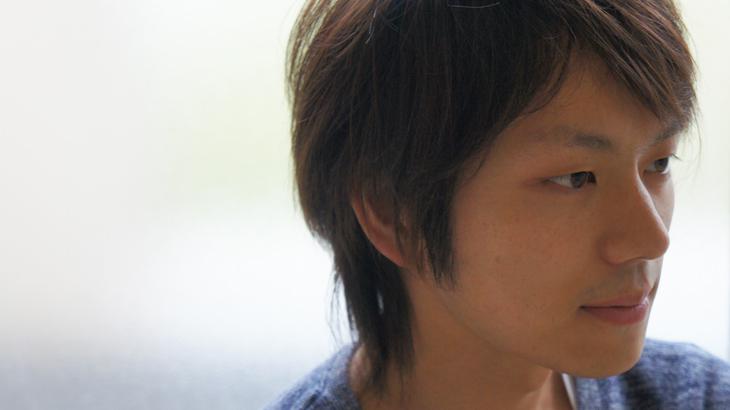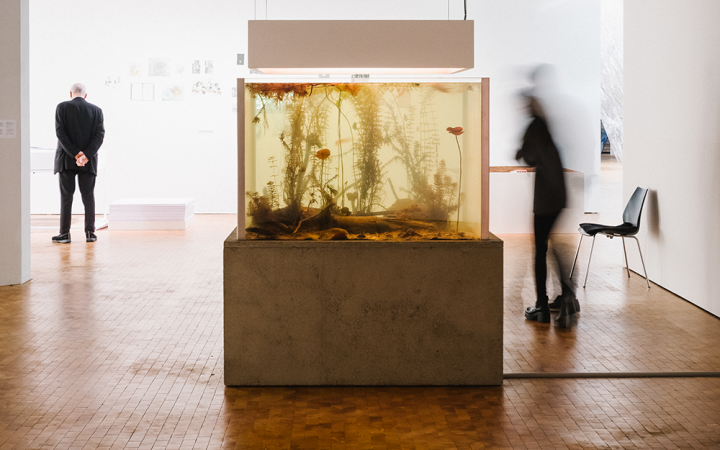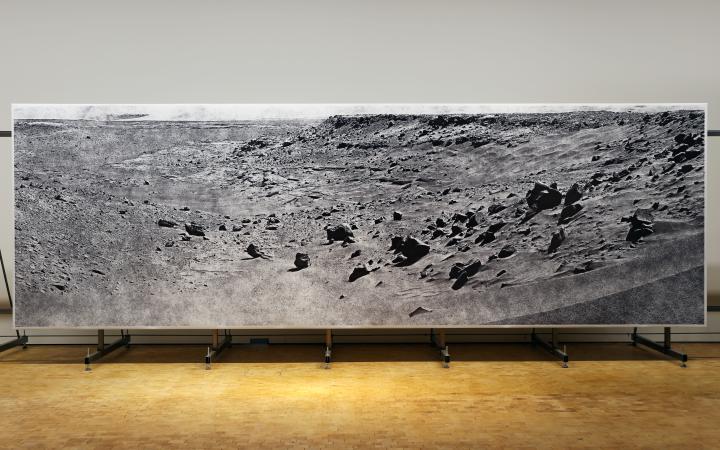
2012-07-18
Japan’s electro-acoustic Scene
The series of events by the IMA | lab at the ZKM | Institute for Music and Acoustics (IMA) regularly introduces international guest artists and displays their works.
Live demonstrations and discussions also form part of the program. The guests at the March event were the two Japanese artists Junya Oikawa and Chikashi Miyama, who had a great deal to report on new developments in current electro-acoustic music – especially in their home countries. Junya Oikawa begins with an overview of the Japanese scene, its type of organization and status within society. He makes reference to a number of institutes, such as Senzoki Gakuen Music College, to festivals, such as the Fuji Acousmatic Music Festival, and to Labels, such as Te Pito Records.
However, he also points to the various difficulties that still confront electro-acoustic music there: the public is small and exclusive, and chiefly comprised of an isolated academic world and, as a whole, there are only a few possibilities to hear the music or come into contact with it in other ways. The way from performances and pieces at concert halls to the club would be one possibility to ensure a larger audience for the music. Furthermore, festivals and concerts have a small budget and are organized, for the most part, by students themselves. There are frequently problems with neighbors due to the noise, and appropriate events venues are rare.
Multimedial character of the examples
In spite of all this, in Japan electro-acoustic music exerts an influence on pop music and the cultural boundaries between S (serious) and E (entertainments) music are not so clearly defined. In an attempt to give a clear impression Oikawa introduces three artists who, in some cases, do not come from the more exclusive university environment. The first such example is the sound artist evala whose work multiplex is comprised of an interesting combination of voice samples, various types of noise, stutter effects and an interesting loud/quiet dynamic. Oikawa compares the work with that of an Englishman and emphasizes the international character of the scene. The two artists stem from different backgrounds, but their sound world is very similar.
In the second, the dancer Umeda Hiroaki is introduced with the show Adapting for Distortion, which takes place against the backdrop of a moving set of grid lines. His body becomes perfectly depicts the electronic sound world and digital projection surface. The artist himself developed both the projection as well as sound. The multimedial character of the examples is continued, since the last in the series is by video artist Masakatsu Tagaki. His film Nihiti is a remarkable experiment with various color filters, with scenes filmed either in or under water. Faces repeatedly appear to break forth out of the waves.
Almost everything is an “input device”
Above all, Chikashi’s lecture turns on the controller he developed, which is an interface for steering the computer and from which the music is eventually generated. In the process, the fingers become the “innards of the PC”. Here, the mapping, namely, the way in which the data on the PC is generated by the controller and transformed into musical signals or notes, plays a central role here. The great advantage in the contemporary instrument development is that almost everything may be used as an “input device”, from Wii controller to the iPhone. The instrument developer scene is similarly versatile and naturally connected to electro-acoustic music.
For an advanced overview Chikashi shows a mindmap in conferences such as the NIME (New Interfaces for Musical Expression); institutions such as the ZKM, software, hardware and artists alike make an appearance. For him, the versatility of the sensors is also important; via infrared and ultrasound through to GPS, everything can be used. The sensors may be carried on the body, or externally positioned; the signal generator may be the body or another object. Single pieces of information can be “mapped” on one or several parameters on the PC, or only on one parameter. In the case of Chikashi’s instruments, the hand generates the signal via a box with infrared sensors. Various generations of instruments are based on this principle, and which have varying numbers of sensors. He built his first model as early as 2005.
For his concert at the ZKM, he will use the “peacock”, a version with 35 sensors. Finally, by way of basic software and a basic controller, he demonstrates the various mapping methods and their effects. The sound generated through this is a straightforward sine wave, much like a Theremin. However, his performances show that that the human voice may also be processed by the controller in the form of a sample.


